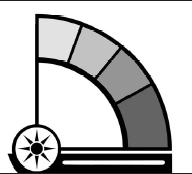GenCon Battle Report: Victory at Sea
By Paul Glasser
Victory at Sea is a complex and detailed model for naval engagements. I played a short demo at GenCon and although time ran out before we could finish the game, it was a thoroughly enjoyable experience.
Five other players participated in the event, and I was assigned command of a Japanese task force, consisting of two Takao cruisers and two Kagero destroyers.
 My forces wait to be deployed.
My forces wait to be deployed.Although the game is normally designed for the scale of 1/2000 to 1/6000, we used 1/700 scale ships and tripled most of the values. My teammates also controlled a cruiser division and a pair of Kongo-class battle cruisers respectively.
{default}
 My teammates, Ken, left, and Rich, right, discuss how to deploy their ships while preparing for the Victory at Sea demo.
My teammates, Ken, left, and Rich, right, discuss how to deploy their ships while preparing for the Victory at Sea demo.We were facing an American task force that consisted of six Fletcher-class destroyers, the cruiser USS New Orleans, the battleship North Carolina, and light cruisers Atlanta and Brooklyn. Both sides spread out their forces on the carpet, covering an area of more than 20 ft. by 40 ft. outside of a conference room.
Each player received data cards that included a number of statistics related to speed, armor, turning rate and other characteristics. Larger ships, like cruisers and battleships, are easier to target, but have better armor. Smaller ships like destroyers are hard to hit, but can’t take much damage.
"Speed is your only ally," said Tom, the game master. "If you’re hit you’re dead."
Other sections of the data cards allow a player to mark damage to specific areas, like fire control, rudder, bridge, fuel, props, turbine or engine.
 This graded key was used to determine the turning rate of destroyers, cruisers and battleships.
This graded key was used to determine the turning rate of destroyers, cruisers and battleships.My Kagero destroyers were very maneuverable but their complement of 6 x 5 in. guns couldn’t do much damage against larger ships. However, their best feature was an array of 9 x 24 in. torpedo tubes with long range and excellent armor penetration. After delivering one torpedo attack, the crew could reload and fire again, unlike most ships.
[continued on next page]
Pages: 1 2



